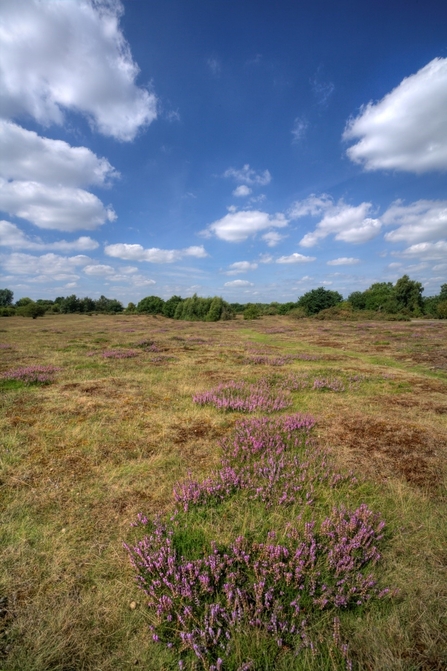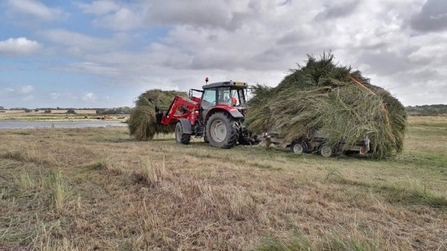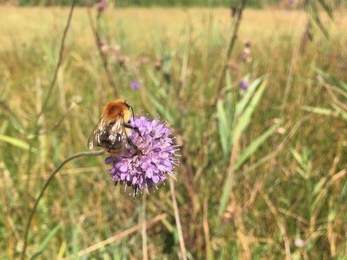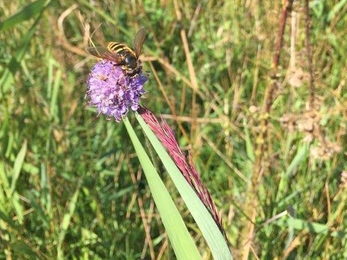Weekly Wild news from our reserves - 28th August
By Steve Aylward
Swathes of purple flowers currently dress the valley sides of Knettishall Heath nature reserve. Heather, also known as 'Ling', is a woody, coarse plant with delicate, loosely arranged pink flowers which attract all kinds of nectar-loving insects. Historically, heather has been used for many purposes, such as fuel, fodder, building materials, thatch, packing and ropes. It was also used to make brooms, which is how it got its Latin name Calluna vulgaris - Callunais derived from the Greek word meaning 'to brush'. According to herbal medicine, honey made from ling heather is said to be beneficial for bladder and kidney complaints.

Heather at Knettishall Heath - Sam Norris
Devil’s-bit scabious
Like nodding pincushions, the lilac-blue flower heads of Devil's-bit scabious attract a wide variety of insects, such as this common carder bee and hoverfly seen at Carlton Marshes. The flowers are also an important food source for moths and butterflies, including the declining marsh fritillary butterfly which is found in west England, Scotland and Wales. In historic times, this wildflower was used to treat scabies and sores from the bubonic plague, hence its Latin name ‘scabere,’ meaning to scratch.
Trimley Marshes gets a trim
Staff and volunteers have been getting stuck in at Trimley Marshes this week as the reserve got its annual cut. The team were busy cutting and clearing grassland swards, rush, sedge and wildflower on and around the lagoon islands. Annual cuts like this, and a helping hand from our grazing cattle, help to keep the grassland vegetation short, creating suitable habitat for our autumn arrivals such as wigeon, teal, pintail and dark-bellied Brent geese. Trimley welcomes hundreds of wigeon and teal annually and teal can be seen feeding on the small seeds in the water.
Recent wildlife sightings at Trimley include great white egret, cattle egret, spotted redshank, greenshank and large roosts of oystercatchers and black tailed godwits.
Trimley Marshes nature reserve remains open for your enjoyment and offers great birdwatching from the river wall, although please note the hides and visitor centre are currently closed due to social-distancing guidelines.

Trimley gets a hair cut - Andrew Excell



